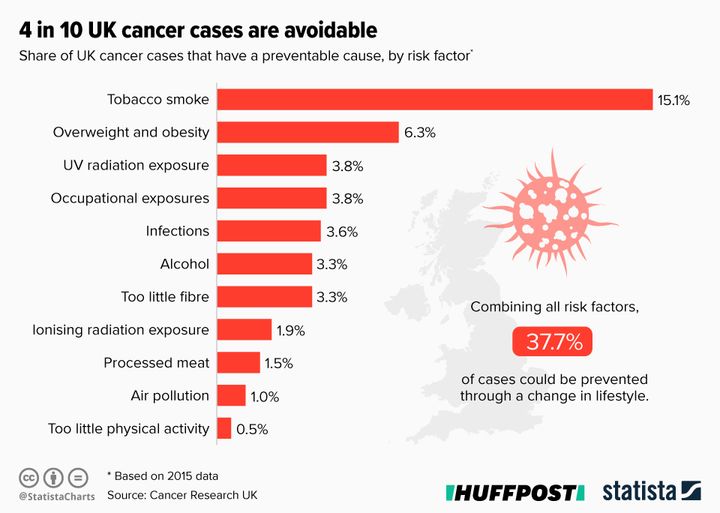
Aside from the headline stat that new cancer cases continue to rise in England, one aspect that sticks out from the latest Office for National Statistics’ (ONS) cancer figures is the significant north-south divide in incidence rates.
When looking at new cancer cases per 100,000 people in 2017, the North East, North West and Yorkshire and the Humber have the highest rates – all substantially above the English average. Which begs the question, why?

The key to finding out why people either side of the Pennines are being diagnosed with cancer at a higher rate lies chiefly with one word – lifestyle. Recent Cancer Research UK analysis showed that one in four cases of cancer could be prevented through a change in lifestyle and at the top of their list of avoidable causes was tobacco smoke.
As with cancer, when it comes to smoking, the country’s northern regions also rise to the top of the rankings. With a 17% share of adults professing to being smokers in Greater Manchester and Yorkshire and the Humber, there is nowhere in the country that it is more prevalent. Of the next four places on the list, three are located in the north, and the other is the North Midlands.

As the above infographic shows, obesity is the second most common avoidable cause, but in terms of our search for the answer to the north-south divide question, there is little convincing evidence to be found. The highest rate is in the West Midlands and, while the North East’s men are certainly up towards the higher end of the scale, the second highest rate for males is in the South West.
Moving on then, anyone like myself that comes from the north would admit that UV exposure can probably also be scratched off the list of possible reasons.
The next vice we could point our fingers at is alcohol. The rate of deaths attributed to alcohol consumption is highest in the North East, where in 2017 there were 15.5 such cases per 100,000 people. Next up is the North West, followed in now predictable fashion by Yorkshire and the Humber. As with the cancer rates, all of these regions lie above the English average.
While it is essentially true that lifestyle is a choice, positive correlations between deprivation levels and what could be considered as ‘avoidable’ deaths are also evident. As an example, deaths due to lung cancer, the third most diagnosed cancer in 2017, were most common in the most deprived areas of England. A total of 3,892 lung cancer deaths were recorded in these places, and this number decreases steadily down to just 1,972 in the least deprived parts of the country.
Although high levels of deprivation can be found nationwide, and the analysis is done on a small area level rather than regionally, the latest governmental ‘indices of deprivation’ reveal 33 of the 50 most deprived local authorities to be located in the north.
The north-south divide in 2017 is far from a freak result, either, going back over the stats still available from the ONS, the North East and North West have had the highest rates every year since at least 2011.
Martin Armstrong is a data journalist at Statista